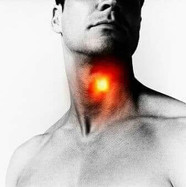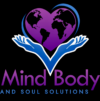LeaAnn: Exercises for Dysphagia
I always start my start my story with “I went sleep as LeaAnn and woke up a total stranger.”
On September 2014 Labor day, I suffered a bleeding stroke and brain anyurism followed by brain surgery to relieve the pressure. This was due to a blood disease I caught in my mechanical heart valves after some routine dental surgery. The doctors told my family that if I survived, I would never be the same. After 3 months if learning how to walk, talk, chew, swallow, read and write, everything all over again, the doctors were right about one thing. I will never be the same.
I have no memory of the day that changed my life forever. I went to sleep and suddenly there I was being moved from ICU. I don’t recall much of my time in the hospital, bits and pieces here and there. But one thing I will never forget is being hungry. For the first 2 months I was unable to chew or swallow without choking. Pureed roast beef and carrots were my diet. If anybody explained to me why this was happening, I have no memory. Once I was allowed solid food, a nurse sat with me, reminding me to slow down, to chew and swallow my food.
Once I got home, after receiving no other forms of therapy once I left the hospital, I continue to have difficulty remembering to take small bites and remembering to swallow. Verbal cues from my husband are helpful, but often a sip of water, or even my own saliva can have me choking and gagging.
Dysphagia refers to difficulty in swallowing, it takes more effort than normal to move the food from the mouth to the stomach.
The most common neurological conditions associated with Dysphagia include:
*Stroke
*Head trauma
*Multiple Sclerosis
*Dementia
*Tumors of the brain or spinal chord
*Cervical spine injury
*Myopathy
*Motor neuron disease.
My first outing out in the big bad world was my birthday dinner with my family and my daughter’s new partners parents. Everything was going so well and I got caught up in eating, talking and laughing and forgot to pay attention to my chewing and swallowing. I began to choke and gag, the pain was incredible. Fortunately I once my panic subsided and I was able to swallow, the party went on and it was one of the best birthdays that I can remember.
Depending on the specific neurological condition, a person may experience Dysphagia for some unique reasons.
For example: With a stroke, a person may have difficulties. Because there may be an absent or delayed swallowing reflex, weakening throat muscles and difficulty controlling movements of the tongue.
Symptoms and Complications
Swallowing difficulties can result in an excessive production of saliva, drooling, cough or choking during eating, (as with my birthday dinner experience.) and even difficulty speaking. Or a hoarse voice. An infection of the lungs named Aspiration Pneumonia may also occur as can malnutrition and dehydration.
To best avoid these complications of Dysphagia, the evaluation of neurological illness often involves a formal swallowing assessment. This can help to identify Dysphagia before any complications can occur.
Goals Of Exercise
Therapies are designed for improvement in swallowing focused on strengthening muscles and building coordination of the nerves and muscles involved when you swallow.
In fact, exercising your swallowing muscles is the best way to improve your ability to swallow.
Here are some swallowing exercises developed by Dysphagia rehabilitation experts.
Exercise
To perform this exercise, lie flat on your back and raise your head As though you were trying to fixate your gaze on your toes. While you do this, makes sure not to raise your shoulders.
(Best to do 3 to 6 times a day)
*Exercise
This exercise will help you build swallowing muscle strength.
Place a small peice of paper (about 1 inch in diameter) over a blanket or a towel. Then place a straw. In your mouth and suck one of the prices of paper to its tip. Keep sucking on the straw. To keep the paper attached, bring it over a cup or something similar.
(Your goal for each session is to place about 5 pieces of papers into your container.)
*Exercise
This is a simple exercise I myself have been doing for about a week, must to test it for us! It’s very effective for improving the swallowing reflux.
To do this Exercise, keep your adams apple elevated for about two to 5 seconds each time. in order to best understand the movement, you can keep your adams apple elevated with your fingers in the beginning.
(Repeat several times per day, until you are able to control your swallowing muscles without assisting with your hands)
*Exercise
You should try this Exercise without food. As you become better you can try it with some actual food in your mouth.
* First, take a deep breath
* Hold your breath as you swallow.
* A cough to clear any residue of salvia or food which might gone down past your vocal chords.
(I recommend this one also*)
*Exercise
After you take a deep breath, bear down while swallowing. The pressure you generate helps with swallowing and has increased the strength in my swallowing muscles very noticeably.
If you or a loved one has dysphagia due to a neurological cause, these excersizes can improve swallowing and prevent aspiration and malnutrition.
After three years of choking and forgetting to swallow, I have an appointment for swallow rehabilitation, from my reaseach, The therapist may reccomend dietary changes for me to improve swallowing like using a straw or spoon, taking smaller bites of foods, or using a thickener to bulk up thin foods.
Leaving you with high recommendation of these excersizes, and hope that they help with strengthening your swallowing muscles. Thank you for joining me and for reading.

